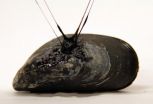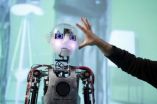(Press-News.org) CHAPEL HILL, N.C. – Researchers at the University of North Carolina at Chapel Hill have pinpointed a crucial function for a key player in the development of the nervous system. They found that this player – a protein called Erk – is necessary for nerve fibers to be wrapped with an insulating substance called myelin, which allows messages to be sent from the brain to the peripheral limbs and back again.
The finding has particular importance because several neurodevelopmental disorders have recently been linked to genetic mutations in the complex developmental cascade containing Erk and its sister proteins.
The UNC study, published Jan. 13, 2011, in the journal Neuron, suggests that the effects of Erk are quite different from what previous studies done in vitro, in Petri dishes, had indicated.
"These in vitro studies have been absolutely important for understanding how things work on a molecular level," said lead study author Jason M. Newbern, PhD, a postdoctoral research associate at the UNC School of Medicine. "But when you try to say that a tiny artificial system sitting in the culture hood is going to mimic the complexity of the interactions that occur when a cell develops and wraps around a nerve fiber, as it is growing out into your limb, as your limb is growing at the same time, and as your neurons are maturing and secreting different chemicals -- there is just no way you can replicate that in a dish."
Close to 10,000 papers have been published on the in's and out's of this famous cascade, known to scientists as the MAP kinase pathway. Because this pathway is so complicated, finding a way to completely "knock-out" its critical genes in a living animal has been difficult, said senior study author William D. Snider, MD, professor of neurology and cell and molecular physiology, and director of the UNC Neuroscience Center.
Using a number of genetic engineering tricks, the researchers were able to specifically knock-out the Erk gene during the development of the peripheral nervous system in mice. After knocking out the gene, the researchers were surprised to find that the neurons of the mutant mice appeared to be relatively unaffected.
"But we did see a dramatic effect in these myelinating cells called Schwann cells, which wrap the fibers in the peripheral nervous system with myelin to allow the rapid conduction of signals," said Snider. "These cells were just devastated at every stage of development."
The discovery informs the study of neurodevelopmental disorders such as neurofibromatosis, a genetic disease that affects 1 out of every 3000 people. In people with this disease, Schwann cells grow in an unregulated fashion, dotting the peripheral nerves with tumors.
Now that scientists have identified close to 30 genetic mutations in the MAP kinase pathway, Newbern says that there is increasing awareness of the importance of ERK signaling to neurodevelopmental disorders.
"So it provides a very compelling argument that we need to figure out what this pathway is doing in an in vivo setting, in a live animal," said Newbern.
Because the cognitive defects experienced by patients with neurodevelopmental delay are more closely linked to the development of the central nervous system than to the peripheral nervous system, the researchers plan to expand their studies to see what the effects might be of losing Erk in the brain. They also want to develop models than can recapitulate what happens when this pathway is overactive, as is the case with neurofibromatosis.
INFORMATION:
The research was funded by the National Institutes of Health, and a National Research Service Award to Dr. Newbern . Study co-authors from Snider's laboratory at UNC include Xiaoyan Li, research scientist; Sarah E. Shoemaker, postdoctoral research associate; Jiang Zhou, research scientist; Yaohong Wu, chief technician; Daniel Bonder, graduate student; and Steven Hollenback, technician Dr. Jian Zhong from Cornell and Dr. Gary Landreth from Case Western Reserve University School of Medicine are also co-authors.
Scientists link protein to the insulation of the nervous system's wiring
2011-01-28
ELSE PRESS RELEASES FROM THIS DATE:
Universal solvent no match for new self-healing sticky gel
2011-01-28
Scientists can now manufacture a synthetic version of the self-healing sticky substance that mussels use to anchor themselves to rocks in pounding ocean surf and surging tidal basins. A patent is pending on the substance, whose potential applications include use as an adhesive or coating for underwater machinery or in biomedical settings as a surgical adhesive or bonding agent for implants.
Inspiring the invention were the hair-thin holdfast fibers that mussels secrete to stick against rocks in lakes, rivers and oceans. "Everything amazingly just self-assembles underwater ...
Sprouts? Supplements? Team them up to boost broccoli's cancer-fighting power
2011-01-28
URBANA – A new University of Illinois study provides convincing evidence that the way you prepare and consume your broccoli matters, and also suggests that teaming broccoli with broccoli sprouts may make the vegetable's anti-cancer effect almost twice as powerful.
"Broccoli, prepared correctly, is an extremely potent cancer-fighting agent—three to five servings a week are enough to have an effect. To get broccoli's benefits, though, the enzyme myrosinase has to be present; if it's not there, sulforaphane, broccoli's cancer-preventive and anti-inflammatory component, doesn't ...
New national study finds 34 percent increase in running-related injuries among children
2011-01-28
Researchers at the Center for Injury Research and Policy of The Research Institute at Nationwide Children's Hospital examined running-related injuries among children and adolescents 6 to 18 years old and found that an estimated 225,344 cases were treated in U.S. emergency departments from 1994 through 2007, for an average of more than 16,000 each year. During the 14-year study period, the annual number of running-related injuries increased 34 percent.
According to the study, appearing in the February 2011 issue of Clinical Pediatrics, the majority of running-related ...
Current violent juvenile treatment methods costly, ineffective, MU researcher finds
2011-01-28
COLUMBIA, Mo. – In a time of shrinking budgets, one University of Missouri professor believes that the current approach to juvenile crime is much too expensive to continue – and he has the numbers to prove it.
Charles Borduin, a professor of psychological sciences in the MU College of Arts and Science finds that multisystemic therapy (MST) is more effective in the lives of troubled youth and costs less.
Borduin has pioneered the model for the treatment and prevention of serious mental health problems in children and adolescents throughout the course of his career. MST ...
Newborn screening increases survival outcome for patients with severe combined immunodeficiency
2011-01-28
(WASHINGTON, January 27, 2011) –Severe Combined Immunodeficiency (SCID) occurs in just one out of every 50,000 to 100,000 births in the United States, yet it is the most serious primary immunodeficiency disorder.[1] A study published today in Blood, the Journal of the American Society of Hematology (ASH), demonstrates that babies with SCID who are diagnosed at birth and receive a hematopoietic stem cell transplant (HSCT), which is the transplantation of blood-forming stem cells, have significantly improved survival.
SCID is a rare group of genetic disorders characterized ...
Opposites may attract, but they don't make better parents
2011-01-28
A study by experts at the University of Exeter has revealed that couples with similar personalities make much better parents than those with different dispositions – at least in the world of zebra finches.
Researchers found birds expressing strong personality traits, such as aggressive behaviour or a willingness to explore, did a much better job of raising young if they had a like-minded partner. Where couples were markedly different in personality, chicks didn't fare as well – being less well-fed and in poorer condition.
The research paper, published in the journal ...
Yearly mammograms from age 40 save 71 percent more lives, study shows
2011-01-28
ANN ARBOR, Mich. — A new study questions the controversial U.S. Preventative Service Task Force recommendations for breast cancer screening, with data that shows starting at a younger age and screening more frequently will result in more lives saved.
The study analyzed the same data looked at by the task force, which issued its guidelines on mammography screening in November 2009. The study authors compared the task force's recommendations for screening every other year in women 50-74 to American Cancer Society guidelines of screening every year in women 40-84.
The ...
Scientists determine what makes an orangutan an orangutan
2011-01-28
For the first time, scientists have mapped the genome--the genetic code--of orangutans. This new tool may be used to support efforts to maintain the genetic diversity of captive and wild orangutans. The new map of the orangutan genome may also be used to help improve our understanding of the evolution of primates, including humans.
Partially funded by the National Science Foundation, the orangutan study appears in the Jan. 27 issue of Nature. It was conducted by an international team of scientists led by Devin P. Locke of the Genome Center at Washington University.
Conservation ...
On the hunt for universal intelligence
2011-01-28
We have developed an 'anytime' intelligence test, in other words a test that can be interrupted at any time, but that gives a more accurate idea of the intelligence of the test subject if there is a longer time available in which to carry it out", José Hernández-Orallo, a researcher at the Polytechnic University of Valencia (UPV), tells SINC.
This is just one of the many determining factors of the universal intelligence test. "The others are that it can be applied to any subject – whether biological or not – at any point in its development (child or adult, for example), ...
Study shows smaller rows contribute to more soybean yields in colder climates
2011-01-28
Madison, WI January 27, 2011 – Soybean production has continued to increase in the Northeast United States with more and more first time growers planting the crop and many experienced growers planting alongside corn crops. To save on time and expenses, some farmers plant soybeans with a corn planter in 30-inch rows instead of 7.5-inch rows with the regularly used grain drill.
Dr. William Cox, a Cornell University scientist, investigated the response of two soybean varieties in row widths of 7.5, 15, and 30 inches at four seeding rates in a study funded by a USDA Hatch ...

